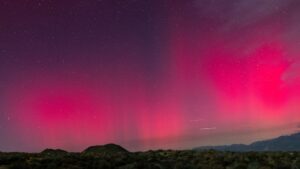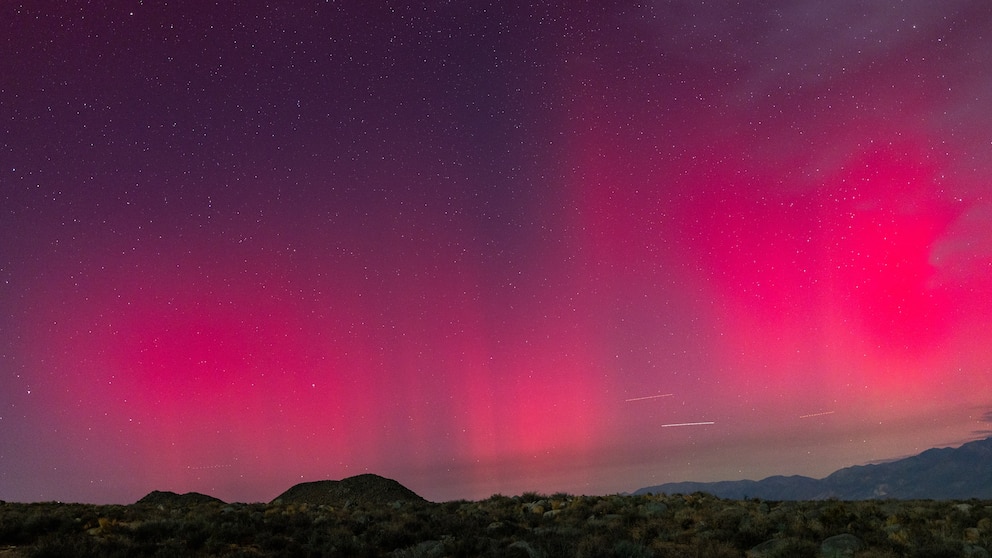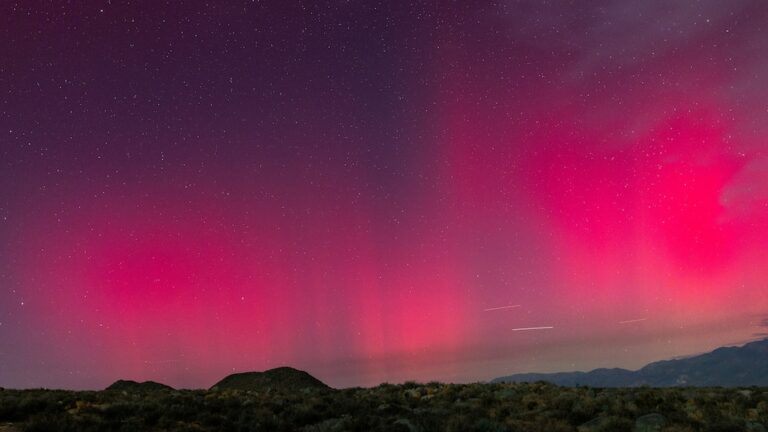Witness the Natural Wonder: Northern Lights Tonight
As the solar activity peaks, the Northern Lights, also known as the Aurora Borealis, are making headlines across the United States. For those eager to catch a glimpse of this stunning natural phenomenon, you may be in luck tonight! According to a recent report by ABC News, the Northern Lights will be visible in as many as 18 states tonight. This rare event not only draws attention from sky-gazers but also serves as an extraordinary chance to educate people about the science and beauty behind the Aurora Borealis.
Understanding the Northern Lights
The Northern Lights are caused by collisions between charged particles from the sun and atoms in the Earth’s upper atmosphere. When this occurs, energy is released in the form of light, creating the vibrant colors that many have come to adore. The most common colors seen are green, pink, red, yellow, blue, and violet. The best time to view them is usually during the winter months when the nights are long and dark.
The Science Behind the Aurora Borealis
The aurora is a result of solar wind – a stream of charged particles emitted from the sun. When these particles reach the Earth, they enter the Earth’s magnetic field, particularly in the polar regions, where they collide with gases in the atmosphere. This interaction produces light and creates the mesmerizing displays that stretch across the night sky. The lights can vary greatly depending on a number of factors, including solar activity and atmospheric conditions.
Where to See the Northern Lights Tonight
According to the aforementioned report by ABC News, the Northern Lights will be visible across multiple states including, but not limited to:
- Minnesota
- Wisconsin
- Michigan
- North Dakota
- Montana
- Idaho
- Oregon
- Washington
For those living in or near these areas, it’s advisable to find a dark spot away from city lights to fully enjoy the experience. Being patient is key; the auroras can appear intermittently, so it may take some time during your wait. Be sure to dress warmly!
Tips for Capturing the Aurora on Camera
If you wish to document this beautiful spectacle, here are some tips for photographing it:
- Use a Tripod: A sturdy tripod is essential for long exposure shots that need stability.
- Manual Settings: Use manual settings on your camera. Set the ISO to a higher value, typically between 800-1600, and open the aperture as wide as possible.
- Long Exposures: Use long exposure settings (15-30 seconds) to capture as much light as possible.
- Focus On Infinity: Set your focus to infinity for the best results.
- Dress Warmly: Being comfortable while capturing the lights will help you enjoy the moment more.
Experience the Aurora Borealis Safely
As exciting as chasing the Northern Lights can be, safety should be paramount. Ensure you’re aware of weather conditions, travel safely if venturing out of town, and notify someone of your plans. In some cases, auroras can be quite unpredictable, so it is wise to check forecasts regularly.
Understanding the Impacts of Solar Activity
The visibility of the Northern Lights can also serve as a reminder of the effects of solar activity on our planet. For instance, increased solar flares can lead to disruptions in communication systems and power grids. Understanding the balance between solar activity and its effects can enhance our appreciation of the auroras and their significance in our atmosphere.
Celebrate and Share Your Experience
Taking time to enjoy and share your Northern Lights experience can foster a deeper connection to this wondrous natural display. Whether through photography, social media, or community events, sharing your stories can inspire others to engage with the beauty of the natural world around us.
Conclusion
If you’ve ever dreamed of witnessing the ethereal dance of the Northern Lights, tonight could be your chance! Capitalizing on this solar event not only brings joy but also encourages discussions about nature, science, and the breathtaking phenomena occurring in our universe. Remember to check your local conditions and find a great spot to watch, and don’t forget to share your experiences with others!
For more information on this evening’s aurora sightings, check out the original report by ABC News.








